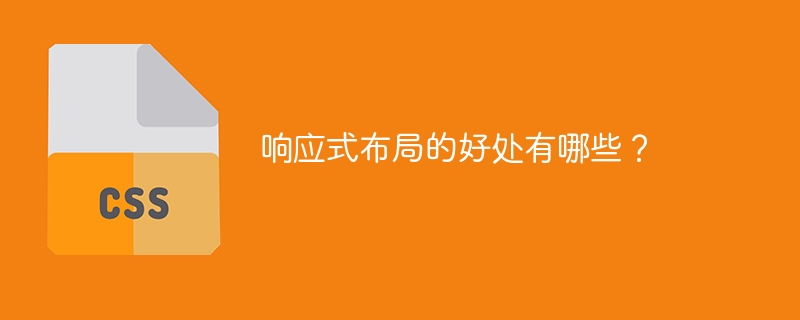

What are the benefits of responsive layout? -Explore mobile-first design trends
With the increasing popularity and frequency of use of mobile devices, responsive layout is becoming more and more important in web design. Responsive layout is a design technique that enables web pages to adapt adaptively to the user's device size and screen resolution to provide the best browsing experience. In this article, we’ll explore the benefits of responsive layout and give some concrete code examples.
Responsive layout allows web pages to adjust adaptively on different devices, ensuring the readability and usability of page content. Whether the user is using a desktop computer, tablet or mobile phone, web pages can adapt to the screen size and resolution to ensure that users get the best browsing experience. This adaptive layout can reduce users’ scrolling and zooming operations and better meet users’ operating habits and needs.
Using responsive layouts allows web pages to maintain a consistent look and functionality across all devices. This ensures that the website's content can be easily accessed and used regardless of the device the user is using. In addition, responsive layout only requires writing one set of code to cope with the needs of different devices and screen sizes, thereby reducing the complexity of maintenance and updates.
Responsive layout is also very beneficial for SEO. Because content has consistent URLs across all devices, search engines don’t need to index pages differently for different devices and can better understand the structure and content of a web page. In addition, responsive layout can also improve the speed and performance of web pages, which is also one of the important factors for search engine optimization.
The following are some code examples of responsive layout, allowing us to understand how it is implemented more intuitively:
HTML code:
<!DOCTYPE html>
<html>
<head>
<meta name="viewport" content="width=device-width, initial-scale=1.0">
<link rel="stylesheet" type="text/css" href="style.css">
</head>
<body>
<header>
<h1>响应式布局示例</h1>
</header>
<nav>
<ul>
<li><a href="#">首页</a></li>
<li><a href="#">关于我们</a></li>
<li><a href="#">产品</a></li>
<li><a href="#">联系我们</a></li>
</ul>
</nav>
<section>
<div class="content">
<h2>欢迎访问我们的网站!</h2>
<p>这是一个响应式布局的示例网站。</p>
</div>
</section>
<footer>
<p>版权所有 © 2022 响应式布局示例网站</p>
</footer>
</body>
</html>CSS code (style.css) :
@media only screen and (max-width: 600px) {
/* 在小于等于 600px 宽度的设备上适应布局 */
body {
font-size: 16px;
}
header {
background-color: #ff0000;
}
nav ul li {
display: inline-block;
margin-right: 10px;
}
section {
margin: 20px;
}
footer {
text-align: center;
}
}In this example, we use CSS media queries (Media Queries) to define styles under different screen widths. When the screen width is 600px or less, the page layout and styling will change to accommodate the smaller device. By using media queries and other CSS techniques, we can implement more complex responsive layouts to meet the needs of different devices.
Summary:
The benefits of responsive layout include improving user experience, improving website accessibility and maintainability, and improving search engine optimization. Through specific code examples, we can have a clearer understanding of how responsive layout is implemented. As a mobile-first design trend, responsive layout not only allows our web pages to adapt to different devices and screen sizes, but also provides users with a consistent and high-quality browsing experience.
The above is the detailed content of What are the advantages of responsive design?. For more information, please follow other related articles on the PHP Chinese website!




